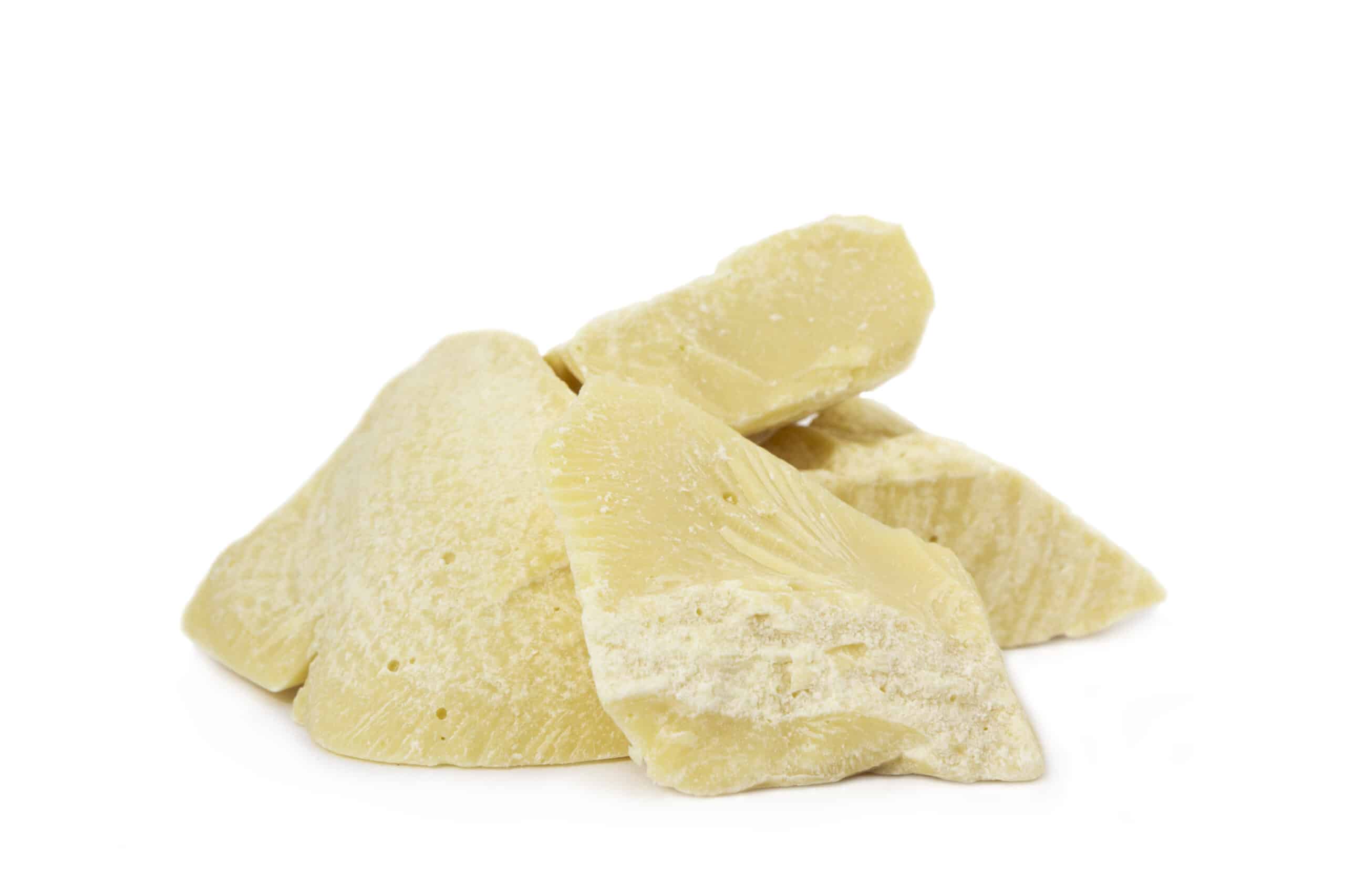Cocoa Butter

Cocoa butter comes from cocoa plant, originally, was indigenous to tropical America; today it is cultivated in several countries, among them the Dominican Republic, Malaysia, Ghana, and Côte d’Ivoire.
To obtain the cocoa butter the cocoa beans are roasted and cracked open to facilitate the removal of the shells and the pulp. The cocoa seeds are squeezed through hot rollers transforming them into the cocoa mass that is liquid in its warm state. Cooled down, it hardens. This cocoa mass, also used for the production of chocolate, is the raw material for the production of cocoa butter. A special press machine separates the fat from the remaining components of the mass. The rest left after pressing is the cocoa press cake. It is processed to cocoa butter.
Cocoa butter: Use, properties, benefits
Cocoa butter looks like ordinary butter. Its colour is a pale or light yellow. It has a delicate cocoa scent. Oleic acid and stearic acid have nearly equal shares in the composition; the percentage of palmitic acid is 30 percent at maximum, and linoleic acid adds up to five percent. Moreover, cocoa butter contains vitamin K, vitamin E, A- tocopherol, and minerals and trace elements, particularly potassium.
Cocoa butter as a cooking ingredient only plays a minor part. For operating a chocolate fountain it is absolutely essential, and it is ideal to brown several foods. In the field of medicine, it was used as the base of suppositories and ointments; however, that field of application has declined during recent years. Its medical use reaches back far in history. In South America, for example, it has been renowned as a multipurpose remedy for several complaints already for centuries.
In cosmetics, cocoa butter continues to be on the advance. No wonder! It soothes irritated, rough skin and leaves skin with a comfortable velvety, soft feeling.
It is a popular ingredient in skincare lotions and creams, and it is fundamental to chocolate massages. Combined with shea butter, it is a treatment for supple and soft skin with lipid-replenishing effect. It also is a perfect base of ointments for scars and stretch marks. Women who have recently given birth appreciate the benefits of cocoa butter as it smoothes surgical scars and stretch marks and makes them less visible.
Many lip balm sticks contain cocoa butter. It is very suitable for that purpose thanks to its property to melt at body temperature. Exclusive soaps use it as the base of their super-fatted formulas. After washing one’s hands, skin feels soft and supple. In anti-wrinkle creams it is especially effective to reduce wrinkles in the eye and mouth areas.
However, persons with permanently oily skin and blemishes should avoid products containing cocoa butter. Especially facial cleansing products should be free of it. Because of its high content of saturated stearic acid and palmitic acid it forms a film that could clog the pores.
Cocoa butter not only is ideal to care for dry skin it also has a positive effect on the consistency of lotions and creams. In creams produced on a lecithin base it is lighter than in combination with ordinary emulsifiers usually having a stronger tendency towards film formation.
Until now, there have been no known cases of direct allergies or intolerances in connection with cocoa butter. If such an allergy or intolerance against products containing it occurs, it is most probable that other ingredients are the causes.
Profile: Cocoa butter
Plant of origin: Cocoa tree (theobroma cacao)
CAS number: 8002-31-1
INCI: theobroma cacao seed butter
Melting point: 28 to 36 degrees Celsius
Iodine value: 32 to 40
Saponification value: 192-198
Ideal for rough skin and scars.
Rough skin, stretch marks, surgical scars, or chapped lips:
Cocoa butter smoothes and softens skin in all cases.
It soothes even sensitive skin. There are no cases of intolerance. However, it should not be used on oily skin to prevent pores from clogging.
Cocoa butter has a variety of applications: in soaps, creams, lip balm sticks, nourishing bath additives, and even intensive hair treatments.
